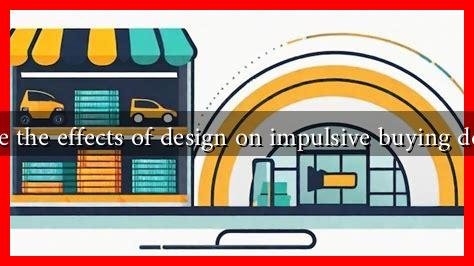-
Table of Contents
What are the Effects of Design on Impulsive Buying Decisions?
In the fast-paced world of retail, understanding consumer behavior is crucial for businesses aiming to maximize sales. One of the most intriguing aspects of this behavior is impulsive buying, which refers to unplanned purchases made on a whim. Research indicates that design plays a significant role in influencing these impulsive buying decisions. This article explores how various design elements impact consumer behavior, supported by examples, case studies, and statistics.
The Psychology of Impulsive Buying
Impulsive buying is often driven by emotional responses rather than rational thought. According to a study published in the Journal of Business Research, emotional triggers can lead to spontaneous purchases, especially in environments that are visually appealing. The design of a retail space can evoke feelings of excitement, nostalgia, or even comfort, which can significantly influence a consumer’s decision to buy.
Key Design Elements Influencing Impulsive Buying
Several design elements can affect impulsive buying decisions. Here are some of the most impactful:
- Color Schemes: Colors can evoke specific emotions and influence purchasing behavior. For instance, red is often associated with urgency and can encourage quick decisions, while blue tends to create a sense of trust and calm.
- Layout and Space: An open layout with clear pathways can make consumers feel more comfortable exploring products. Conversely, cluttered spaces can lead to confusion and deter purchases.
- Lighting: Proper lighting can highlight products and create an inviting atmosphere. Warm lighting can make a space feel cozy, encouraging consumers to linger and explore.
- Signage and Displays: Eye-catching displays and clear signage can draw attention to specific products, making them more likely to be purchased impulsively.
Case Studies: Successful Design Strategies
Several brands have successfully leveraged design to enhance impulsive buying. Here are a few notable examples:
- Apple Stores: The minimalist design of Apple Stores encourages customers to interact with products. The open layout and strategic placement of products create an inviting atmosphere that promotes exploration and, ultimately, impulsive purchases.
- Target: Target’s use of bright colors and seasonal displays creates a sense of urgency and excitement. Their strategic placement of impulse items near checkout areas has been shown to increase unplanned purchases significantly.
- Starbucks: The cozy ambiance of Starbucks, enhanced by warm lighting and comfortable seating, encourages customers to stay longer, often leading to additional purchases beyond their initial intent.
Statistics on Impulsive Buying
Understanding the impact of design on impulsive buying is further supported by statistics:
- A study by the Nielsen Company found that 60% of consumers make unplanned purchases while shopping.
- According to a report by Statista, 23% of consumers in the U.S. admitted to making impulse purchases at least once a week.
- Research from the Journal of Retailing and Consumer Services indicates that store environment factors, including design, can increase impulse buying by up to 30%.
Conclusion
In conclusion, the effects of design on impulsive buying decisions are profound and multifaceted. By understanding the psychological triggers associated with design elements such as color, layout, lighting, and signage, retailers can create environments that encourage spontaneous purchases. Successful brands like Apple, Target, and Starbucks exemplify how effective design can lead to increased sales through impulsive buying. As consumer behavior continues to evolve, businesses must remain attuned to the impact of design on purchasing decisions to stay competitive in the retail landscape.

